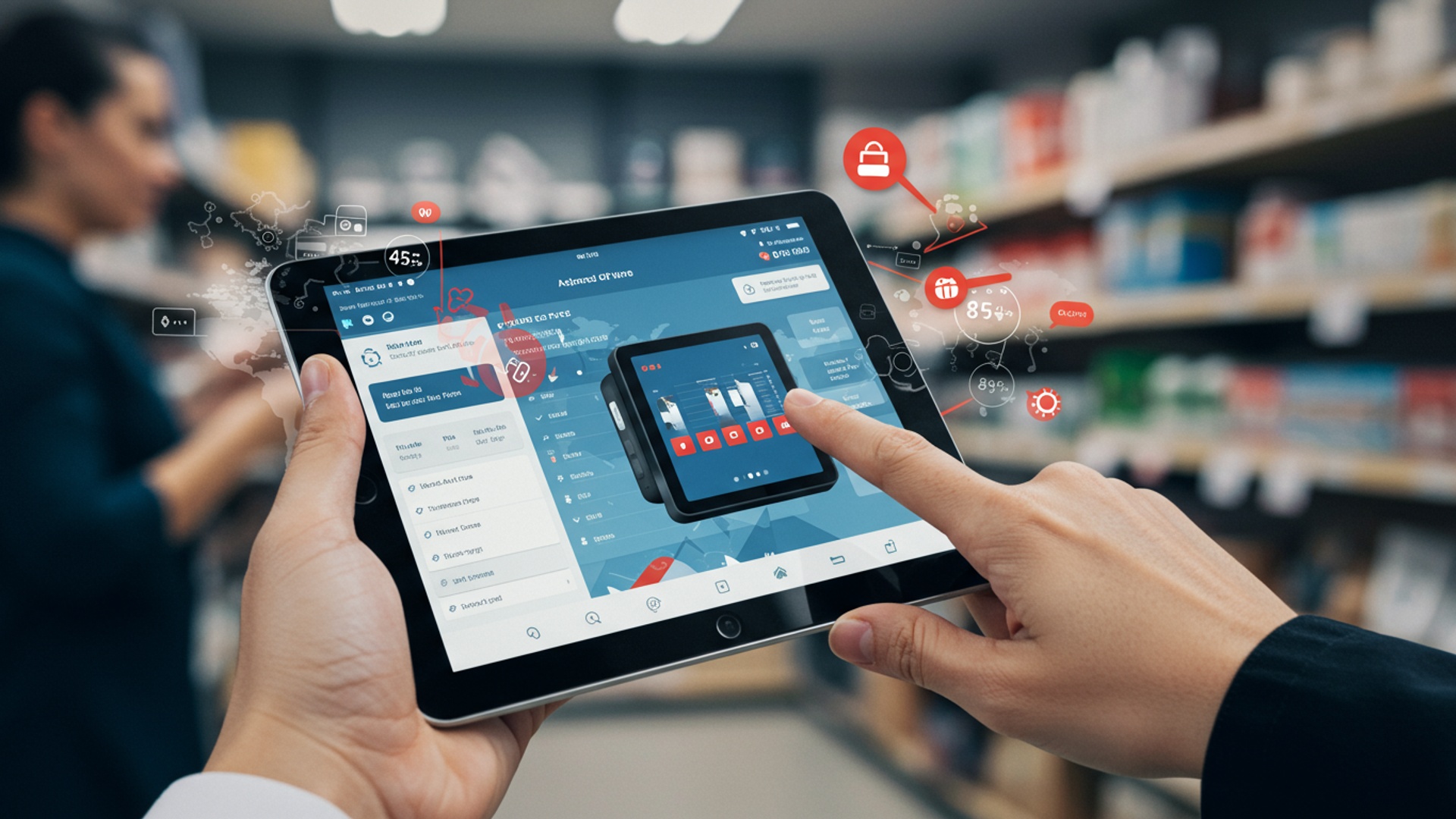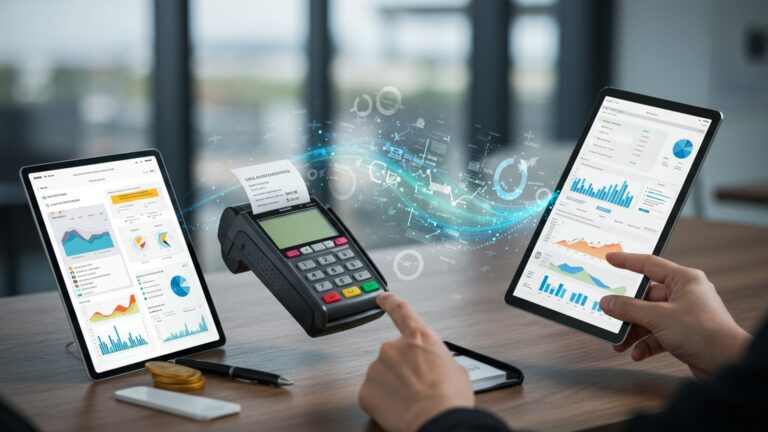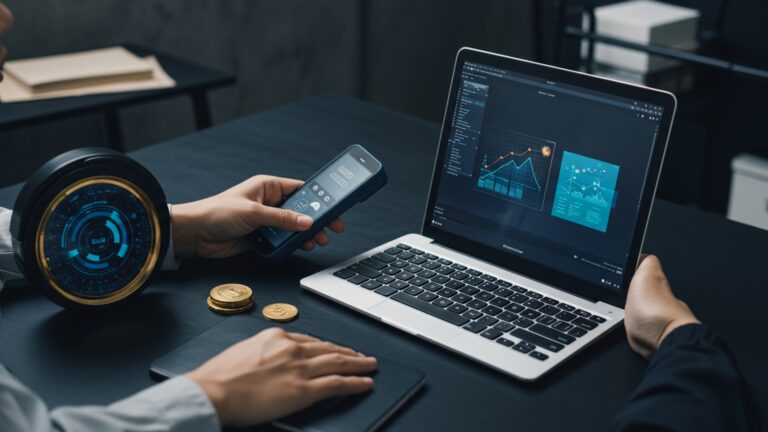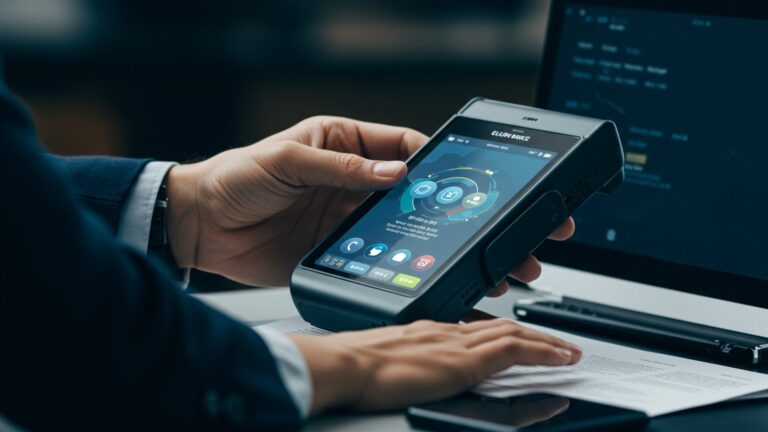Master Android POS Software How to Transform Your Mobile Device into a Sales Hub
In today’s dynamic retail landscape, businesses demand agile, cost-effective solutions to manage transactions and customer interactions seamlessly. Gone are the days of bulky, expensive legacy systems; the future of commerce is mobile. your smartphone holds immense untapped potential. Powerful android pos software now transforms any compatible mobile device into a sophisticated, fully functional sales hub, enabling everything from real-time inventory management to secure contactless payments. This innovation empowers pop-up shops, mobile service providers. small retailers to process sales, track customer data. generate instant reports directly from their pocket, mirroring the capabilities of enterprise-level systems with unparalleled flexibility and significantly reduced overhead.

Understanding Android POS Software and Its Evolution
In today’s fast-paced retail and service industries, efficiency and mobility are paramount. The traditional Point of Sale (POS) system, often a bulky terminal tied to a counter, is rapidly being replaced by more agile solutions. This is where android pos software comes into play, transforming everyday mobile devices into powerful sales hubs. At its core, a POS system is where a customer makes a payment for goods or services. It’s the critical juncture where a transaction is completed.
Android POS software refers to dedicated applications designed to run on Android-powered smartphones or tablets, enabling them to perform all the functions of a traditional POS terminal. This includes processing sales, managing inventory, tracking customer data. generating reports. The shift towards Android as a platform for POS systems is driven by several factors:
- Cost-Effectiveness
- Flexibility and Accessibility
- User Familiarity
- Mobility
Android devices are generally more affordable than proprietary POS hardware or Apple iOS equivalents, significantly lowering the barrier to entry for small and medium-sized businesses (SMBs).
The Android ecosystem is vast, offering a wide range of devices and peripherals. Its open-source nature allows for greater customization and integration possibilities.
Most users are already familiar with the Android operating system, reducing the learning curve for staff.
The inherent portability of Android devices means businesses are no longer tethered to a fixed location.
The evolution of POS has moved from mechanical cash registers to electronic POS (EPOS) systems. now to mobile POS (mPOS) solutions, with Android being a dominant platform in the mPOS space. This progression is fueled by technological advancements, particularly in payment processing and cloud computing.
The Core Components of an Android POS System
To effectively transform an Android mobile device into a sales hub, several key components work in conjunction. Understanding these elements is crucial for building a robust and efficient system.
- Mobile Device
- Android POS Software Application
- Hardware Peripherals
- Card Readers
- Magstripe (Swipe)
- EMV (Chip)
- NFC (Tap-to-Pay)
- Receipt Printer
- Barcode Scanner
- Cash Drawer
- Cloud Backend
- Data Synchronization
- Remote Management
- Data Security & Backup
- Scalability
This is the foundation of your Android POS system. While smartphones can be used, tablets (e. g. , Samsung Galaxy Tab, Google Pixel Tablet) are often preferred due to their larger screen size, which facilitates easier navigation and data entry for sales associates. Key considerations include screen size, battery life, processing power. connectivity options (Wi-Fi, Bluetooth, 4G/5G).
This is the brain of the operation. It’s the specific app you download from the Google Play Store or directly from a vendor. This software handles all transaction processing, product catalog management, customer data. reporting functionalities. Examples include Square POS, Shopify POS, Lightspeed. hundreds of niche-specific solutions.
While the Android device and software are central, external hardware extends functionality.
Essential for processing credit and debit card payments.
Reads magnetic stripe cards. Less secure and being phased out.
Reads chip cards, offering enhanced security.
Processes contactless payments (e. g. , Google Pay, Apple Pay) via Near Field Communication. Many modern card readers combine EMV and NFC capabilities.
For physical receipts. These typically connect wirelessly via Bluetooth or Wi-Fi to the Android device. Thermal printers are common due to their speed and lack of ink requirements.
Speeds up product lookup and inventory management. Can be an external Bluetooth scanner or, for lower volume, the Android device’s camera can often be used with certain android pos software.
Securely stores cash. Often connected via a receipt printer, which triggers the drawer to open after a cash transaction.
Most modern android pos software solutions are cloud-based. This means transaction data, inventory levels, customer insights. sales reports are stored securely in the cloud. This offers several advantages:
All devices running the POS software can access the same real-time data.
Business owners can monitor sales and manage inventory from anywhere with an internet connection.
Cloud providers typically offer robust security measures and automatic data backups.
Easily add more devices or locations without complex infrastructure changes.
Benefits of Adopting Android POS Software for Businesses
The transition to android pos software offers a compelling suite of advantages that can significantly impact a business’s operational efficiency, customer satisfaction. bottom line.
- Cost-Efficiency and Reduced Overhead
- Unmatched Mobility and Flexibility
- Pop-up Shops and Markets
- Mobile Services
- Queue Busting
- Table-Side Ordering
- Enhanced Customer Experience
- Streamlined Inventory Management
- Powerful Sales Reporting and Analytics
- Scalability and Growth Potential
- User-Friendly Interface
One of the most significant benefits is the lower initial investment. Instead of purchasing expensive, dedicated POS terminals, businesses can leverage existing Android smartphones or tablets, or acquire new ones at a fraction of the cost. This reduces capital expenditure and offers a quicker return on investment.
Easily set up a full sales operation at temporary locations.
Service providers like plumbers, beauticians, or food trucks can process payments on-site, improving customer convenience.
During peak hours, staff can use mobile devices to process orders and payments away from the main counter, significantly reducing wait times.
Restaurants can take orders and payments directly at the table, enhancing service speed and accuracy.
Faster checkout processes, the ability to email or text receipts. personalized service options (like looking up past purchases or applying loyalty points on the spot) all contribute to a more positive customer interaction. For example, a retail assistant can check stock availability or show product details on their tablet without leaving the customer’s side.
Many android pos software solutions offer real-time inventory tracking. Every sale automatically updates stock levels, preventing overselling and ensuring accurate reordering. This feature alone can save businesses countless hours and prevent lost sales due to out-of-stock items.
The software collects vast amounts of sales data, which can then be analyzed to identify trends, popular products, peak sales times. employee performance. These insights are invaluable for making informed business decisions, optimizing marketing strategies. improving operational efficiency.
As a business grows, android pos software can easily scale with it. Adding new terminals or locations often just requires installing the app on another device and connecting it to the cloud backend, making expansion seamless.
Given that Android is a widely adopted operating system, most employees will find the interface intuitive and easy to learn, minimizing training time and potential errors.
Setting Up Your Android Mobile Device as a Sales Hub
Transforming your Android device into a fully functional sales hub is a straightforward process. it requires careful planning and execution. Here’s a step-by-step guide to get you started:
- Choosing the Right Android Device
- Screen Size
- Battery Life
- Processing Power
- Connectivity
- Durability
- Selecting the Best Android POS Software
- Features
- Pricing
- Integration
- Customer Support
- Industry-Specific Needs
- Integrating Essential Hardware
- Card Reader
- Receipt Printer
- Barcode Scanner
- Cash Drawer
- Configuring Products and Services
- Product Names and Descriptions
- SKUs (Stock Keeping Units)
- Pricing (including tax rates)
- Categories and Variants (e. g. , size, color)
- Inventory Levels
- Images (if supported)
- Payment Processing Setup
- Training Staff
- Processing sales (cash, card, split payments)
- Applying discounts and refunds
- Managing returns
- Basic inventory lookup
- Troubleshooting common issues (e. g. , card reader not connecting)
While almost any Android device can run android pos software, choosing the right one will optimize performance and longevity. Look for:
Tablets (8-10 inches) are generally preferred for ease of use, especially for product catalogs and order entry.
Essential for all-day operation without constant recharging, particularly for mobile applications.
A mid-range to high-end processor ensures smooth operation, especially with multiple apps running or complex inventory databases.
Ensure robust Wi-Fi, Bluetooth for peripherals. optionally 4G/5G for mobile operations.
Consider ruggedized cases or devices, especially in demanding environments like kitchens or outdoor markets.
This is arguably the most critical decision. Evaluate options based on:
Does it support inventory, CRM, employee management, online ordering, loyalty programs?
grasp monthly fees, transaction rates. any hidden costs.
Does it integrate with your existing accounting software (e. g. , QuickBooks, Xero), e-commerce platform (e. g. , Shopify), or payment gateways?
Look for vendors with responsive and knowledgeable support, as issues can arise at critical times.
Some software is tailored for restaurants, others for retail. some for services.
Many providers offer free trials, allowing you to test the software before committing.
Once you’ve chosen your software, connect your peripherals:
Most modern readers connect via Bluetooth. Follow the manufacturer’s instructions to pair it with your Android device. Ensure it’s compatible with your chosen android pos software.
Connect via Bluetooth or Wi-Fi. Many POS apps have a discovery feature to find and connect to compatible printers.
If using an external Bluetooth scanner, pair it like any other Bluetooth device. If your software supports camera scanning, no external hardware is needed for basic use.
Typically connects to the receipt printer via an RJ11 cable. The printer then triggers the drawer to open.
This involves uploading your product catalog to the android pos software. You’ll define:
Many systems allow bulk uploads via CSV files, saving considerable time.
You’ll need a merchant account and a payment gateway. Often, the android pos software provider integrates directly with their own payment processing service (e. g. , Square, Shopify Payments), simplifying this step. Ensure your account is verified and ready to accept payments.
Even with an intuitive interface, proper training is crucial. Conduct hands-on sessions covering:
By following these steps, you can effectively transform your Android mobile device into a powerful and efficient sales hub, ready to serve your customers.
Advanced Features and Integrations
Beyond basic sales processing, modern android pos software solutions offer a rich ecosystem of advanced features and integrations that can further enhance business operations and customer engagement. Leveraging these capabilities can provide a significant competitive edge.
- Customer Relationship Management (CRM)
- Loyalty Programs
- E-commerce Integration
- Employee Management
- Time Clock
- Performance Tracking
- Permission Levels
- Multi-location Support
- Offline Mode Capabilities
- Accounting Software Integration
- Reporting Customization
Many Android POS systems include basic CRM functionalities. This allows businesses to capture customer data (name, contact info, purchase history), which can be used for targeted marketing, personalized offers. understanding customer preferences. More advanced integrations can sync this data with dedicated CRM platforms like Salesforce or HubSpot.
Built-in or integrated loyalty programs allow businesses to reward returning customers. This can range from simple points-based systems to tiered rewards, encouraging repeat business and fostering customer loyalty. For instance, a coffee shop might offer a free drink after every ten purchases tracked through their android pos software.
For businesses with both a physical storefront and an online presence, seamless integration between the Android POS and an e-commerce platform (like Shopify, WooCommerce) is vital. This ensures inventory levels are synchronized across all sales channels. customer data and sales reports are consolidated.
Advanced features often include employee management tools such as:
Employees can clock in and out directly from the POS device.
Monitor individual sales performance.
Assign different access rights to employees based on their roles (e. g. , cashiers can’t process refunds without manager approval).
For businesses with more than one store, the cloud-based nature of android pos software allows for centralized management of inventory, sales. employee data across all locations. This provides a holistic view of the entire operation from a single dashboard.
A crucial feature, especially for mobile businesses or areas with unreliable internet. Offline mode allows transactions to be processed even without an internet connection. Once connectivity is restored, all accumulated data is automatically synced to the cloud, ensuring no sales are lost and inventory remains accurate.
Direct integration with accounting software (e. g. , QuickBooks, Xero) streamlines financial management. Sales data, expenses. other financial data are automatically transferred, reducing manual data entry and minimizing errors.
While standard reports are useful, advanced android pos software allows for customizable reports. Businesses can tailor reports to focus on specific metrics, providing deeper insights into sales trends, product performance. customer behavior.
Real-World Applications and Success Stories
The versatility of android pos software means it’s being adopted across a wide spectrum of industries, proving its value in diverse operational environments. Here are a few examples:
- Food Trucks and Cafes
- Boutique Retailers
- Mobile Service Providers
- Pop-up Shops and Market Vendors
Imagine “The Daily Grind,” a popular coffee truck. Before adopting android pos software on a ruggedized tablet, their ordering process was manual, leading to long queues and frequent errors. By implementing an Android POS, they now take orders and payments quickly, track popular drinks. manage ingredients in real-time. Their customer line moves faster. they’ve reduced waste by optimizing their inventory, leading to a 20% increase in daily transactions.
“Chic Boutique,” a fashion retailer, uses Android tablets to empower their sales associates. Instead of customers waiting at a fixed counter, associates can process sales anywhere in the store. They can look up product details, check stock in other sizes or colors. even show customers how an item looks on a model using the tablet. This personalized, seamless experience has improved customer satisfaction and increased average transaction value.
A freelance mobile hairdresser, “Hair on the Go,” relies on her smartphone with android pos software. After each appointment, she can instantly process payments, send digital receipts. even book the client’s next appointment. This professionalism and efficiency set her apart from competitors who still rely on cash or clunky portable card readers.
During seasonal markets or festival events, setting up a traditional POS can be cumbersome and expensive. “Artisan Crafts,” a small business selling handmade goods, uses an Android tablet with a Bluetooth card reader at various pop-up locations. This allows them to accept card payments reliably, track sales per event. maintain a consistent inventory across all their selling points without needing a fixed internet connection, thanks to offline mode capabilities.
These examples illustrate how businesses, from micro-enterprises to growing establishments, leverage the flexibility and power of android pos software to streamline operations, enhance customer interactions. ultimately drive growth. The actionable takeaway here is that by embracing this technology, businesses can overcome traditional operational hurdles and adapt to modern consumer expectations.
Security Considerations for Android POS Software
While the convenience and flexibility of android pos software are undeniable, robust security measures are paramount, especially when handling sensitive customer payment data. Businesses must prioritize security to protect both themselves and their customers from fraud and data breaches.
- Data Encryption
- PCI DSS Compliance
- Device Security
- Strong Passwords/PINs
- Remote Wipe Capabilities
- Screen Lock
- Device Management Software
- Software Updates and Patches
- Network Security
- Access Control
- Reputable Vendors
All sensitive data, especially payment insights, must be encrypted both in transit (when it’s sent from the device to the cloud) and at rest (when it’s stored on the device or in the cloud). Look for POS solutions that explicitly state their encryption standards (e. g. , AES-256).
The Payment Card Industry Data Security Standard (PCI DSS) is a set of security standards designed to ensure that all companies that process, store, or transmit credit card data maintain a secure environment. Your chosen android pos software and its payment processor must be PCI DSS compliant. This is non-negotiable for accepting card payments legally and securely.
The physical Android device itself is a potential vulnerability. Implement strong device security practices:
Ensure all devices are protected by strong passwords, PINs, or biometric authentication (fingerprint, facial recognition).
In case of theft or loss, the ability to remotely wipe sensitive data from the device is crucial.
Configure devices to automatically lock after a short period of inactivity.
For larger operations, Mobile Device Management (MDM) software can enforce security policies across all Android POS devices.
Keep the Android operating system and the android pos software itself updated to the latest versions. Software updates often include critical security patches that address newly discovered vulnerabilities. Enable automatic updates where possible.
Ensure that the Wi-Fi network used by your POS system is secure. Use WPA2 or WPA3 encryption, change default router passwords. consider setting up a separate network for POS devices to isolate them from other business or guest networks.
Implement role-based access control within your android pos software. Not all employees need access to all features (e. g. , refunds, reporting, inventory adjustments). Restrict access based on job function to minimize internal threats.
Choose android pos software from reputable vendors with a proven track record in security. Avoid unknown or unverified applications that could contain malware or lack proper security protocols.
By diligently addressing these security considerations, businesses can harness the power of Android POS technology while safeguarding their operations and customer data effectively.
Future Trends in Android POS Technology
The landscape of Point of Sale technology is constantly evolving. android pos software is at the forefront of many exciting innovations. As mobile technology advances and consumer expectations shift, we can anticipate several key trends shaping the future of Android POS systems:
- AI-Powered Analytics and Personalization
- Biometric Payments and Authentication
- Voice Commerce Integration
- Enhanced Hardware Integration and Smart Peripherals
- Increased Reliance on Cloud-Native Solutions
- “Invisible” Payments and Self-Checkout
- Augmented Reality (AR) for Product Visualization
Future android pos software will increasingly leverage Artificial Intelligence and Machine Learning to provide deeper insights into sales patterns, customer behavior. inventory optimization. Imagine a system that not only tells you what sold well but also predicts future demand based on weather patterns, local events, or social media trends. AI will also enable more personalized customer experiences, suggesting relevant products or promotions based on past purchases.
The integration of biometric technologies (fingerprint, facial recognition, iris scans) for payment authorization and staff login is set to become more prevalent. This offers enhanced security and a frictionless checkout experience, moving beyond traditional PINs and signatures. Many Android devices already have robust biometric capabilities, making this a natural progression for android pos software.
As voice assistants (Google Assistant, Amazon Alexa) become ubiquitous, integrating voice commands into POS operations is a logical next step. Imagine an employee saying, “Add three lattes and two croissants,” or a customer initiating a payment simply by saying, “Pay with Google Pay.” This could significantly speed up order entry and reduce touch points.
Expect to see more sophisticated and integrated peripherals. This could include smart scales that automatically input weight-based pricing, intelligent display screens that show dynamic promotions to customers, or even robotic elements for order fulfillment in fast-food environments. The open nature of Android makes it an ideal platform for connecting with a wide array of specialized hardware.
While many Android POS systems are already cloud-based, the trend will move towards fully cloud-native architectures that are inherently more scalable, resilient. easier to update. This allows for continuous deployment of new features and security patches without significant downtime for businesses.
Building on the success of concepts like Amazon Go, future android pos software could facilitate more “invisible” payment experiences where customers simply walk out with items. their payment is processed automatically through sensors and AI. Self-checkout options, powered by Android tablets, will also become more sophisticated, offering a wider range of payment options and troubleshooting assistance.
In retail, AR features could allow customers to virtually “try on” clothes or see how furniture looks in their home using their Android device, enhancing the shopping experience even before a purchase is made through the POS.
These trends highlight a future where android pos software becomes an even more intelligent, integrated. indispensable tool for businesses, constantly adapting to new technologies and evolving consumer expectations to deliver unparalleled efficiency and customer satisfaction.
Conclusion
You’ve now mastered the blueprint for transforming your mobile device into a dynamic sales hub with Android POS software. This isn’t just about processing transactions; it’s about unlocking unparalleled flexibility and efficiency for your business. My personal tip is to start small: deploy a single Android tablet for your next pop-up event or even just for line-busting during peak hours. You’ll quickly witness the immediate impact on customer flow and operational agility, a crucial advantage in today’s fast-paced market where consumers expect seamless, on-the-go service. Embrace the power of mobility that current trends like QR code ordering and contactless payments demand. Imagine a food truck, for instance, taking orders and payments directly at the window using just a smartphone, or a small boutique offering personalized checkout experiences anywhere in the store. This shift isn’t merely convenient; it’s a strategic move towards a more responsive and customer-centric operation, providing a unique insight into how modern retail can truly adapt. Don’t just observe the future of sales; actively shape it by leveraging the robust capabilities of Android POS. Your mobile device is poised to become your most versatile business asset.
More Articles
Unlock Business Growth with Android POS Software Your Complete Tutorial
Master Mobile POS Software Essential Guide for On-the-Go Business Operations
Why Cloud Based POS Software is Your Business Future Learn How to Adopt It
How to Choose the Best Billing and POS Software for Your Business Needs
Enhance Your Retail Store How to Implement POS Software Effectively
FAQs
What exactly is this ‘Master Android POS Software’ thing?
It’s a smart software solution that lets you turn your regular Android smartphone or tablet into a full-fledged point-of-sale (POS) system. Think of it as giving your mobile device all the tools you need to run your sales operations, right from taking orders to processing payments, making it a portable sales hub.
How does my mobile device actually become a sales hub with this software?
The software installs on your Android phone or tablet, transforming its interface into a powerful sales tool. Once set up, it provides an intuitive way to manage products, take customer orders, calculate totals. often integrate directly with payment processors for card transactions. It essentially replaces traditional cash registers and bulky POS hardware with something you already own and carry.
What do I need to get started with transforming my phone into a POS?
You primarily need an Android smartphone or tablet, the Master Android POS software itself. usually a stable internet connection for processing payments and syncing data. Depending on your business needs, you might also want a compatible card reader (often Bluetooth-enabled), a receipt printer, or a barcode scanner, though many basic functions can be performed without these peripherals.
Can any business use this software, or is it for specific types?
This kind of mobile POS is incredibly versatile! It’s perfect for a wide range of businesses, including small retail shops, cafes, food trucks, pop-up stores, market vendors, service providers who work on-the-go (like mobile beauticians or repair technicians). even larger businesses looking for a portable or supplementary sales terminal. If you sell products or services, you can likely benefit from it.
What are the main advantages of using my phone as a POS system?
The biggest perks are portability and cost-effectiveness. You can take sales anywhere, which is fantastic for mobile businesses, events, or busy retail floors. It saves you money on expensive dedicated hardware, is generally quick and easy to set up. often comes with robust features like inventory tracking and sales reporting built-in, making your business operations much smoother and more efficient.
Is it safe to process customer payments and data using my mobile phone?
Yes, absolutely. Reputable Android POS software is designed with security as a top priority. It uses strong encryption for all transactions and sensitive data. Payment processing is typically handled through secure, third-party payment gateways that comply with industry standards (like PCI DSS), ensuring your customer’s financial insights is protected. Always make sure you’re using a trusted software provider.
Can I keep track of my inventory and sales performance using this?
You bet! A key feature of most Master Android POS solutions is comprehensive inventory management. You can easily add products, track stock levels in real-time. even get alerts when items are running low. Beyond that, it usually includes powerful sales reporting tools, giving you valuable insights into your best-selling products, peak sales times. overall business performance, all accessible from your device.





